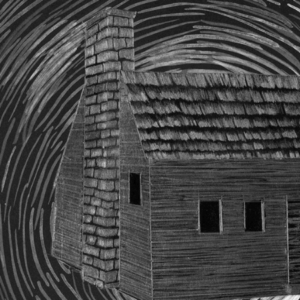
To Catch the Conscience of the President: On the Power of Theater
How We Retell our Stories, From Shakespeare to Beckett to Anne Washburn
Just days after I completed and submitted this column, an enormous controversy broke out over The Public Theater’s staging of William Shakespeare’s play, Julius Caesar, which dramatizes the assassination of Caesar and the ensuing chaos and civil war. The controversy was in the choice to make the murdered Caesar a very obvious stand-in for President Donald Trump. (It should be noted that this is far the first such updating of Shakespeare’s play: in 2012, Minneapolis’s Guthrie Theater staged a Caesar with an stand-in for then-President Obama in the title role, although there was no notable outcry.)
One could hardly ask for a more apt demonstration of the idea of this essay: namely, theater’s unique ability to retell age-old stories, in the process rendering them relevant to contemporary life. And as it so happened, just as this controversy was reaching fever pitch, I myself was watching a production of Julius Caesar at the Oregon Shakespeare Festival—an extraordinary performance, and one lacking any overt references to Presidential politics. What most came through in OSF’s beautifully choreographed and emotionally devastating production is the complete futility of the assassination of Caesar, and the utter hell it unleashes on all involved. Having read Caesar numerous times and now seen it live, I feel confident stating that no matter how one interprets Shakespeare, any faithful production would never be one the endorses political assassination. In a nation with a startlingly high number of Presidential assassinations and assassination attempts, no invocation of Presidential murder should be taken lightly.
That said, The Public Theater’s production of Caesar would have to have been an utter travesty to make such an endorsement. One of the reasons Shakespeare’s work has remained so relevant for over 400 years is that it retains its ability to provoke us and make us think, offering no easy answers, a multitude of points of view, and much leeway for interpretation. To the extent that The Public Theater’s production of Caesar has succeeded in doing these things—while not suggesting that violence is the solution to any American political problem—it should be applauded, not condemned.
__________________________________
Joan Didion famously begins her book The White Album with the following words: “We tell ourselves stories in order to live.” About a year and a half ago I saw a play that made that sentiment literal. I mean literal: for these people, their lives depended on telling stories. It is one of the most incredible plays I can remember seeing in years.
Do you remember that episode of The Simpsons where they parodied Cape Fear? Before it was a Simpsons episode it was a 1962 thriller starring Gregory Peck and Robert Mitchum, and then it was a 1991 remake starring Robert De Niro and Nick Nolte. And then—De Niro’s creepy tattooed knuckles still fresh in the American mind—The Simpsons made “Cape Feare.” The idea is simple: a murderer is released from prison, and he immediately sets out to stalk and murder the man whose testimony put him away. In The Simpsons, the murderer is Sideshow Bob, and it’s Bart he’s stalking. There are plenty of visual and vocal allusions to the film, and since it’s an episode of The Simpsons there are also about two dozen other allusions to all sorts of other things from high art to pop culture.
So “Cape Feare” was already about re-telling a popular story, and embellishing it with all sorts of cultural effluvia. And then Anne Washburn’s play Mr. Burns, a Post-Electric Play came along to take this to an extraordinary place.
The apocalypse has come, civilization has fallen, and bands of survivors are roaming the country, trying to locate loved ones and find enough friendly faces to survive. To stay alert through a long night’s watch against deadly marauders, one such group is trying to retell the “Cape Feare” episode. They want to get it exactly right—exactly—so they’re trying to remember every last line, every gesture, every inflection. This is how they entertain themselves in the long, perilous nights. They’re doing something humanity has done for millennia: coming together to enact a cherished, shared story. It’s not just entertainment—it’s a way of bonding, of reassuring one another, of digressing into personal memories, of establishing common fears and hopes.
Fast forward about a decade. Act II. The rudiments of civilization have been put back in place, but the world is still very much anarchic, very much kill-or-be-killed. There is still no mass media, no TV, no electronic communications. One way people make money in this new epoch is to travel around performing famous episodes from celebrated sit-coms. “Cape Feare” is a crowd favorite. The more authentic these re-creations are, the more successful, so they want to get the show perfectly right—so much so that they’ll pay good money to anyone who can give them a line or two that they haven’t managed to remember. Essentially, they’re trying to reassemble the pop culture that fell away with civilization and perform it live. But—crucially—this is all based on living memory, so these stories are mutating as they are being put back together. And of course they are mutating in accordance with the new realities that everyone has to live with.
We have one extraordinary act left to see, but before we get to that, there was something that struck me about Washburn’s story. As I watched, I knew she had keyed in on something fundamental: she was absolutely right, The Simpsons must be among the most widely disseminated and best-understood myths that American culture has ever produced. If civilization ever were to fall, it would be the exact thing we could come together around. After all, who wouldn’t recognize Bart Simpson’s face? Who doesn’t know that Mr. Burns is nefarious? Who has never heard the dejection in Homer’s famous “D’oh!”? As I watched Mr. Burns, I felt chills down my spine: Of course! It made so much sense!
Act III: We’re now roughly 75 years since the end of civilization. Things have advanced from anarchy to a kind of new feudal era, and what we’re watching is a neo–Passion play rooted in “Cape Feare.” However, the “Cape Feare” episode has evolved so much that it’s almost unrecognizable. The Bart character has somehow fused with elements of Eminem. Sideshow Bob has become similarly integrated with Mr. Burns, and other Simpsons characters have evolved. This episode of The Simpsons has developed into a moralistic fable about how civilization went wrong, and how we can redeem ourselves. Mr. Burns has become conflated with fate, with absolute evil, with that dark, anarchic energy that threatens the stability of civilization. And somehow Bart has become the embodiment of youth and energy, the human spirit that will strive to survive in this sad, stricken world.
Obviously there’s a lot of tongue-in-cheek to Mr. Burns, a Post-Electric Play—it’s clearly a work that thrives on a certain level of the ridiculous—but Washburn’s point about the importance of shared stories and how they evolve is serious as can be. What this play captures is the centrality of narratives to our civilizations, how they develop with us and become answers to our deepest questions. The way that we re-tell them again and again. Enacting these master narratives before our eyes is essential to our survival as a species. When we lose everything else, these stories will be the things that we cling to for community, hope, and understanding.
What better place to explore this theme than the theater, which for thousands of years has been the way we come together as a community to share stories? Theater is still a vital force today—a study by the research firm Nielsen Scarborough determined that in spring 2016, over 47 million Americans had attended a live theatre event within the past month. This is many more people than will leave their homes to watch a film every month.
When we come together to hear stories in a community setting, it is the theater that we are going to, and I think there are very powerful reasons for that. As I write this, I am about to drive some 350 miles to Ashland, OR, in order to attend performances of Shakespeare and contemporary playwrights. It is something I have done for years now—the excitement of arriving in Ashland and finding my seat in its theaters is like nothing else I do all year. I cannot imagine myself (or anyone else) ever driving six hours to watch a movie. I am not alone in making this trip: every spring and summer tens of thousands make their own pilgrimage to Ashland, just as millions head to New York City—and elsewhere—to see a show.
The storytelling one encounters in the theater is found nowhere else in life. Because its means of suspending disbelief are so limited, it must be much more creative and seductive in how it captures our senses and draws us into its world. The results can be very potent. When Shakespeare writes, “Exit, pursued by a bear,” as he famously does in A Winter’s Tale, it is up to theater companies to figure out how to put a bear on stage. Will it be menacing? (An enormous, roaring creature built like a Chinese dragon.) Will it be ironic? (A man obviously dressed in a bear suit.) Will it be surreally deadpan? (An actual bear, as was sometimes done in Shakespeare’s day.) It is up to a theater to engineer its own unique solution each and every time it chooses to re-inhabit this age-old tale.
There is no replacement for actually seeing such things with your own two eyes. I recall a summer evening I sat outdoors at dusk in the Orinda hills to watch Beckett’s very ironically titled, Happy Days, in which poor Winnie gives an hour-long monologue buried waist-deep in sand, eventually getting buried up to her eyeballs. Or a truly astonishing performance of Sarah Ruhl’s Eurydice at the Shotgun Players’ theater in Berkeley, which included a 15-foot leap from a balcony across a precariously stacked wall of gallon-buckets, which of course all came tumbling down as Eurydice desperately attempted to flee the Lord of the Underworld. No other kind of storytelling has ever electrified me as that moment did.
There is a thrilling sense of danger and potential in live theater, and it is elating to see actors sweating with exertion and shaking with emotion. Once you have experienced this, it is impossible to doubt the necessity of our culture’s well-worn words being given new life with each cadre of aspiring performers. There is a renewal, a kind of passing of the torch as each generation accepts its responsibility to propagate our culture’s stories.
And this is why I began this column by saying that the players in Mr. Burns tell stories in order to live. Their performances are indeed their source of sustenance in their harsh, post-apocalyptic world, but even more, without these stories their souls would soon wither. This is the haunting thing about Washburn’s play. It really gives you the feeling of how our stories become us, and of the strange, necessary alchemy that occurs when we experience them.
I want to return to the words of Joan Didion with which I began this piece, but now I will quote her in full:
We tell ourselves stories in order to live. The princess is caged in the consulate. The man with the candy will lead the children into the sea. The naked woman on the ledge outside the window on the sixteenth floor is a victim of accidie, or the naked woman is an exhibitionist, and it would be “interesting” to know which. We tell ourselves that it makes some difference whether the naked woman is about to commit a mortal sin or is about to register a political protest or is about to be, the Aristophanic view, snatched back to the human condition by the fireman in priest’s clothing just visible in the window behind her. We look for the sermon in the suicide, for the social or moral lesson in the murder of five. We interpret what we see, select the most workable of the multiple choices. We live entirely, especially if we are writers, by the imposition of a narrative line upon disparate images, by the “ideas” with which we have learned to freeze the shifting phantasmagoria which is our actual experience.
These stories are how we come to an agreement about just what is this world is. To experience them together is to renew our shared understanding, and to give ourselves a common point around which to debate life’s big questions. Collectively articulating these stories is indeed a thing we do in order to live. I cannot imagine what life would be life without them.
Great Contemporary Theater
Mr. Burns, a Post-Electric Play
Anne Washburn
*
In the Next Room (or the vibrator play)
Sarah Ruhl
*
The Coast of Utopia
Tom Stoppard
*
Copenhagen
Michael Frayn
*
Red
John Logan
*
The Arabian Nights
Mary Zimmerman
*
Antigonick
Anne Carson
*
Death and the King’s Horseman
Wole Soyinka
*
36 Views
Naomi Iizuka
Veronica Esposito
Veronica Esposito is a writer and transgender advocate. She worked with literary translation in multiple capacities for over a decade before choosing to serve her community through peer support. She is currently working toward a masters in counseling. The author of four books, her publications include The Guardian and The New York Times.



















